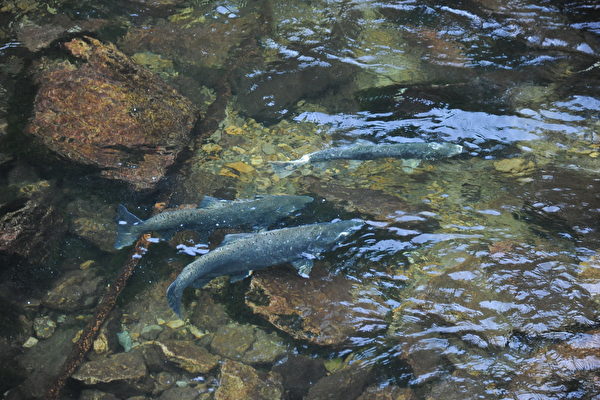In news dated May 25, 2025, the Fraser River in British Columbia, Canada appears to be gearing up for a massive pink salmon migration this year, potentially the largest on record. While this is good news for fishermen, it also raises ecological concerns.
The Department of Fisheries and Oceans (DFO) in Canada has predicted that this year’s pink salmon run could be a once-in-a-lifetime event, with an estimated median migration of 27 million fish. Fisheries and marine scientists, including Kaitlyn Dionne, have shared insights indicating that in August and September, approximately 27 million pink salmon are expected to swim upstream, nearly double the numbers of the last migration.
When flying over the Barrière River, a tributary of the Fraser River, Dionne described last year’s migration as being “like a pink salmon carpet from one end of the river to the other.”
Chris Bos, a director at the Public Fishery Alliance, expressed optimism about the abundance of fish passing through the river and the opportunity for public fishing, viewing it as a cause for celebration. However, he also cautioned that the success of such a large migration is not guaranteed, as various factors along the coastal migration route could affect the survival rates and overall number of fish.
The predicted migration of pink salmon far exceeds the DFO’s target of 8.1 million fish, which represents the ideal population to be preserved after fishing activities. This forecast suggests a significant opportunity for large-scale fishing of pink salmon this year.
Experienced anglers know that pink salmon are not as prized as Chinook or Coho salmon. Comparing them to cars, pink salmon could be seen as the Honda Civic of the salmon world – readily available but not as prestigious. The Pacific Salmon Foundation’s report highlights the positive impact of Fraser River salmon runs on other species’ migration, with increases in Coho and Chinook salmon numbers. However, their projected migration numbers pale in comparison to the expected pink salmon run.
Scientist Brendan Connors warned about the potential competition between pink salmon and more commercially valuable salmon species, emphasizing the far-reaching effects on marine ecosystems and communities that rely on them. While pink salmon populations in British Columbia are rapidly growing amid declines in other salmon species, this trend is not unique to the region but common across the North Pacific.
Climate change plays a role in the increasing salmon numbers, benefiting northern salmon populations but harming those in southern British Columbia. Connors clarified that the rise in pink salmon numbers could lead to heightened competition for limited food resources as salmon migrate from southern to northern regions.
Pink salmon, known for their rosy color and distinct hump, hatch in streams in British Columbia and the Yukon, then journey to the ocean like all Pacific salmon. In the open seas, salmon from various coastal areas mingle in the North Pacific, where they feast on the abundant Arctic waters’ offerings.
Once in the ocean, pink salmon grow rapidly and are voracious eaters, allowing them to dominate the ecosystem. It is estimated that pink salmon currently make up nearly 70% of the total Pacific salmon population.

